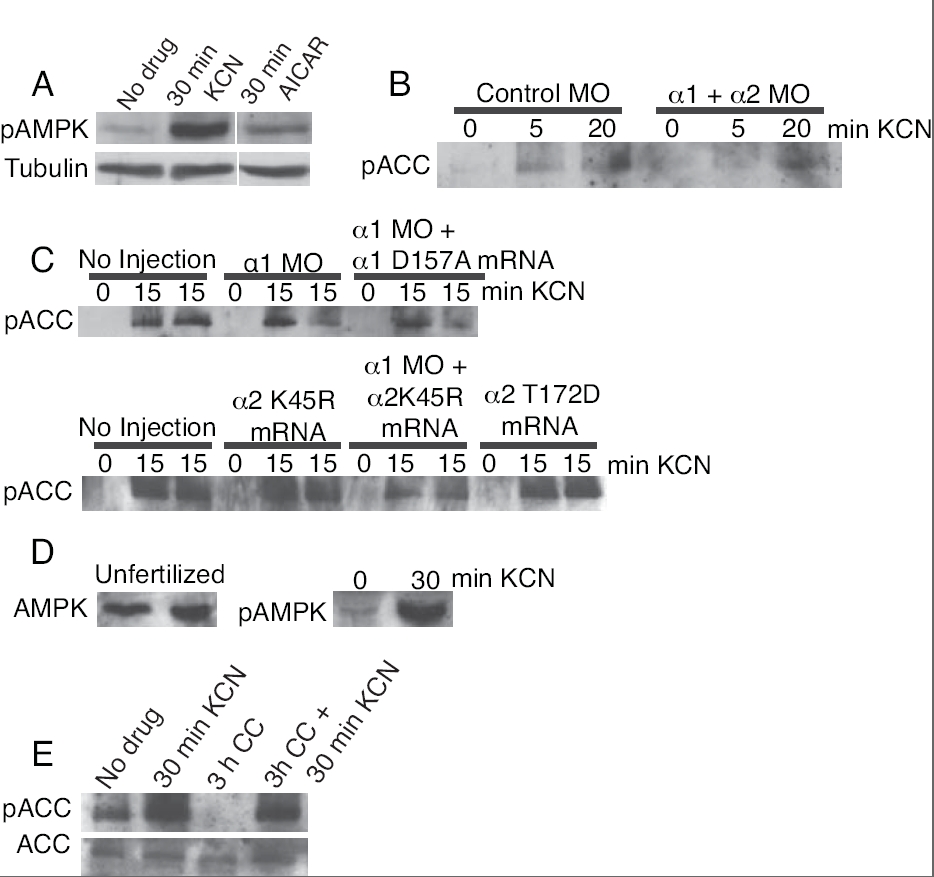Fig. S3 Morpholino, dominant negative, and pharmacologic antagonism of AMPK activity have not sufficiently reduced its activity to determine the necessity of AMPK for anoxic adaptation. A: Activation of AMPK as indicated by increased phosphorylation was not induced by incubation in 10 mM 5-aminoimidazole-4-carboxamide-1-β-D-ribofuranoside (AICAR), and no effect on development was observed. B: Co-injection of 12 ng of antisense morpholino (MO) directed against both 1 and 2 isoforms of zebrafish AMPK did not abrogate the phosphorylation of ACC in KCN and did not produce any change in anoxic viability. C: Injection of MO to AMPK1 or co-injection with mRNA expressing the D157A dominant negative AMPK did not prevent ACC phosphorylation in KCN, nor did injection of the K45R dominant negative mutant with or without co-injection of the 1 MO. No increased phosphorylation of ACC was detected with the constitutively active T172D mutant. Morpholino plus K45R may have reduced ACC phosphorylation, but this treatment was extremely toxic in normoxia, and nevertheless none of these treatments prevented anoxic survival. D: AMPK protein was present in unfertilized eggs, and incubation of unfertilized eggs in KCN caused a dramatic increase in the phosphorylated form of AMPK, indicating a maternal contribution of AMPK protein that can be activated. E: If an immunoblot is exposed for longer, some basal phosphorylation of ACC can be detected. Incubation of 6 hpf embryos for 3 h in 40 μM of the AMPK inhibitor Compound C (CC) reduced this basal ACC phosphorylation but did not prevent ACC phosphorylation in KCN and did not reduce the duration of anoxic viability. Higher doses of CC were lethal in normoxia and often precipitated out of solution. All treatments with KCN were at 1 mM.
Image
Figure Caption
Figure Data
Acknowledgments
This image is the copyrighted work of the attributed author or publisher, and
ZFIN has permission only to display this image to its users.
Additional permissions should be obtained from the applicable author or publisher of the image.
Full text @ Dev. Dyn.

